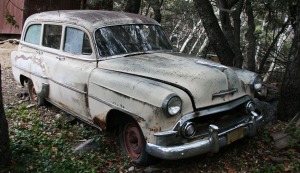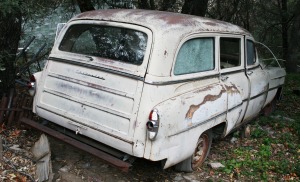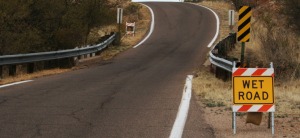Odometer (Legend): 528,547

Odometer (ILX): 65,353

Nerd alert! I’ve had a soft spot for science ever since childhood, and I met one of my heroes – Bill Nye the Science Guy – when I was in college. But I’ve lived in Arizona for over 8 years ago and only recently learned that it’s home to an observatory with the largest collection of optical telescopes in the world. Arizona is chock-full of hidden gems.

I first heard the name “Kitt Peak” when I drove past the turnoff last July while on a roadtrip to Why, Arizona. Since then, I’d been wanting to make it back for a formal visit. There are 3 tours offered daily. Along with my friends Jason and Paul, I made it to the 10:00 a.m. program yesterday, which would focus on the McMath-Pierce Solar Telescope. It is the world’s largest solar telescope.
This was a family outing. And by that, I mean all three vehicles in our caravan were Acuras:
- Black 2010 Acura TL SH-AWD 6MT (Jason)
- White 2013 Acura TL SH-AWD AT (Paul)
- Silver 2013 Acura ILX 6MT (Tyson)
The boys and I broke this trip into a two-dayer, with a Friday night rendezvous in Tucson before the big day. After a hotel buffet breakfast, we fired up our cars and headed westward through the Sonoran Desert on a beautiful morning. As soon as we exited Highway 86, the Tucson-Ajo Highway, I knew we were in for a treat. The next 12 miles were filled with great curves and some of the best scenery in the southwest. I took the lead in the ILX and we climbed to an elevation of 6,880 feet at the summit. Jason and I rowed our manual gearboxes, while Paul manipulated his paddle shifters to command action from his 6-speed automatic transmission. The temperatures were notably cooler as we made our way toward the top.

Kitt Peak’s construction dates back to 1958 when the National Science Foundation supplied funding under President John F. Kennedy. Extensive site evaluations had designated Kitt as the best place for a national observatory: It had more “good seeing days” (273 per year, to be exact) than any other potential site. However, because the land was owned at the time by the Tohono O’odham Indian Nation (and considered very sacred), the U.S. had to negotiate with the tribe before it could lease 2,000 acres. Among the contract terms: The observatory must buy electricity that’s supplied by the reservation. Those stipulations are still in full force today.


By 1962, the McMath-Pierce Solar Telescope had been completed and astronomers were coming from all around the world to try it out. The telescope stands a massive 100 feet in the air, 200 feet into the ground, and has a 500-foot-long angled section that is exactly parallel to the earth’s axis. A telescope uses a series of mirrors and discs that reflect light and focus it to create an image. Even though McMath-Pierce is now over 50 years old, the technology that it employs is still relevant. Infrastructure has been updated with fiber optic communication equipment. Little known fact: The telescope also acts as a gigantic sundial. I guess that makes two massive sundials I’ve visited in recent months. Our tour guide, Larry, took us inside the telescope for a closer look.

Some 2,500 visitors travel to Kitt Peak each year to see McMath-Pierce as well as some of the 17 or so other telescopes on-site. I’d love to go back to Kitt and stargaze sometime during one of the nightly observing programs. For now, enjoy some of the many photos below from this part of our trip! Tomorrow, I’ll share the adventures of the rest of our Saturday Acura drive: A trip to Madera Canyon.
Thanks for coming along!
TL & ILX gearing up for departure on Friday evening

Eastbound on Interstate 10 – it’s about a 90-minute drive to Tucson.

The Shell station located in Picacho Peak, Arizona has a good sense of humor.

… Not to mention some great souvenirs. Coonskin cap, anyone?

Upon arrival in Tucson, I happened to hit 65,065 miles with an exterior temperature of 65 degrees Fahrenheit. The stars would have been in greater alignment if I had been going 65 miles per hour at the time.

Saturday morning: Mini waffles to fuel us for a long day of adventure behind the wheel.

Let’s load ’em up!

Couldn’t have asked for better weather for a Saturday drive.


Which would you pick?

Westward on the Ajo Highway, we knew we were getting close.

Paul snagged a great picture of the ILX from the rear. Kitt Peak was in the distance, awaiting our visit.

And, here we are at the turnoff.

From there, it was 12 miles to the summit at just under 6,900 feet in elevation.

This type of sign gets me excited.

As expected, views were exceptional from all around as we climbed the mountain.

At these elevations, snow is possible and even likely this time of year.


Getting close!

In 1957, our Acuras would have never made this trip. Here’s what the Kitt Peak access road looked like then.

We soon rounded a bend and saw some of Kitt Peak’s telescopes in the distance.

Made it!


The visitor center & gift shop dates back to 1962 and is staffed by members of the Tohono O’odham Indian Nation.

Inside, there are many informative displays. This one gave a comparison between the various sizes of reflective mirrors that are used in telescopes today.

Our tour group was led outside to the massive white structure which was the McMath-Pierce Telescope.

Yikes!

The telescope is actually made of copper, but it was painted white so that it can be as reflective of light as possible.

Inside, we stared down the inner barrel at all the mechanical components that make the telescope work.

This was a neat picture of what the telescope looked like when it was under construction.

Here, Paul and I are standing in front of a 2.1-meter telescope in the background.

Back to the Acuras we went for the next leg of our journey.

Paul took the lead in the white one and we made our descent.

Later that afternoon, we explored one of Arizona’s hidden canyons. Come back tomorrow & read about it!









































































































































































































































